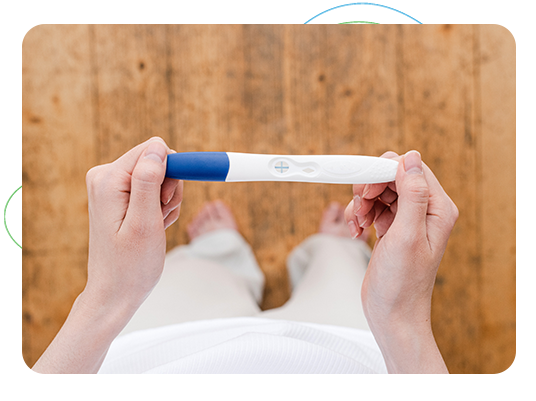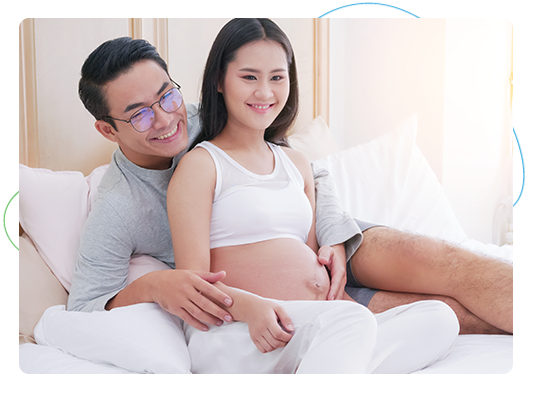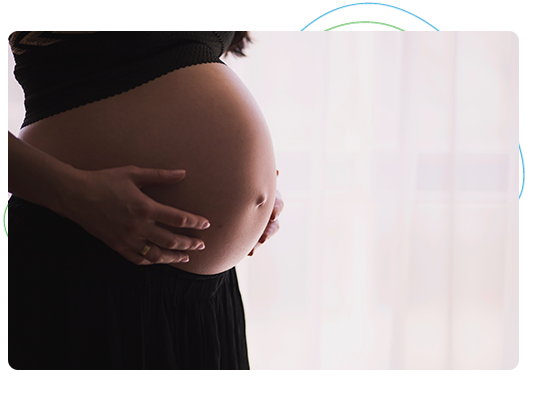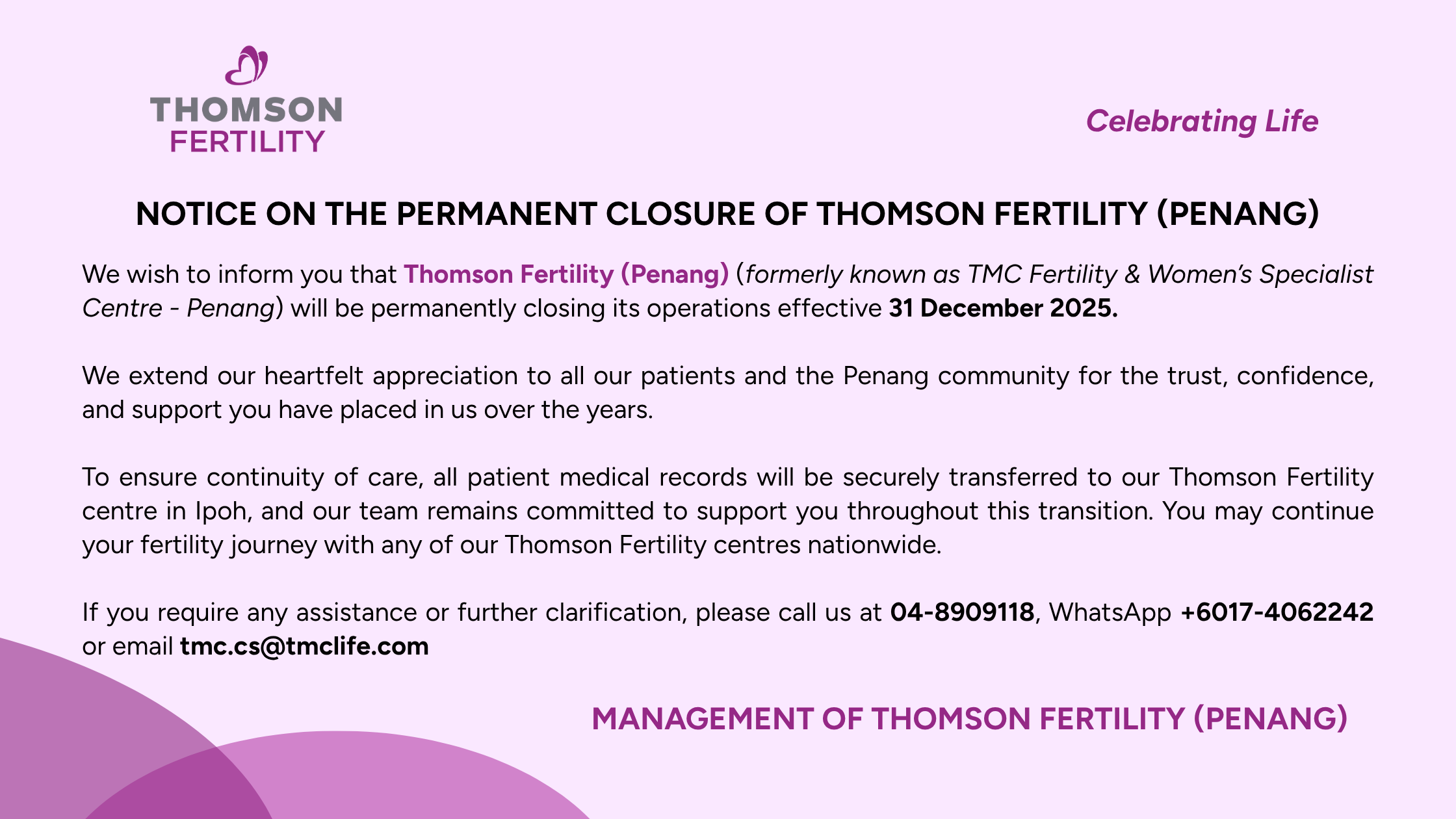
A growing number of couples (around 15%) in Malaysia encounter fertility problems. The issue is more evident in older couples (40+) as the chances of conception decrease with age.
Assisted reproductive technology (ART) may help with fertility issues. ART includes all fertility treatments in which either eggs or embryos are handled. Some ART treatments include in vitro fertilization (IVF), embryo transfer (ET), and gamete intrafallopian transfer (GIFT).
Who is A Good Candidate For ART?
You are a good candidate for ART if:
- You are a couple aged 18-45 who have trouble conceiving a baby. If you and your partner have tried for more than a year to conceive, it’s wise to get tested and consider ART.
- You don’t currently take any psychotropic or psychoactive drugs.
- Your weight is in a healthy range (not overweight or anorexic).
Additionally, if you are a female:
- Your fallopian tubes are not working properly. ART treatments like IVF can help unblock the fallopian tubes to enable conception. Your doctor may need to extract the egg from the ovaries and place it into the fallopian tubes.
- You have ovarian issues. If you have ovarian problems such as low egg count or ovarian damage, you are a good candidate for ART.
- You have limited uterine function. If you have poor uterine function due to disease or other factors, you may look into IVF and other methods.
If you are a male, the following conditions make you an ideal candidate for ART and particularly IVF:
- You have a low sperm count and quality. If recent tests have shown that your sperm count and quality are low, you may consider ART.
- You have anatomical difficulties. Some anatomical difficulties e.g. testicle damage may prevent the production and delivery of sperm. ART may help correct these blockages to enable sperm delivery and conception.
ART is a life-changing decision. It’s best to discuss with your partner first, then with your doctor before making a decision.
To find the best treatment, you need to get tested with blood tests, ultrasound, sperm analysis and more. Check our guide for more information on infertility testing.
Assisted Reproductive Technology Procedures
The available treatments of ART in Malaysia include:
In-Vitro-Fertilization (IVF). IVF is currently the most common form of ART in Malaysia. IVF is a procedure where eggs get fertilized by the sperm outside the body in a laboratory. The process includes:
- Cultivation of several eggs.
- Collection of eggs from the ovaries (oocyte pick up) through the birth canal.
- Fertilization of a chosen egg in the embryology laboratory with active sperm.
- Development of the fertilized egg in a special cultivation medium.
- Transfer of the fertilized to the mother’s uterus within 3-5 days after fertilization.
- Monitoring of the pregnancy progress through follow-up visits.
In-Vitro-Maturation (IVM). IVM works similarly to IVF. The main difference is that the fertilized egg matures in the lab first.
It doesn’t need any hyperstimulation of the ovaries to produce and collect an egg. This prevents the need for repeat injections and trials. In IVM, the only medication you need to take is hormones in pill or suppository form.
The doctor will collect immature eggs and place them in a special cultivation medium. The dish will feature a mixture of luteinizing hormones and follicle-stimulating hormones. After they reach maturation, the doctor will combine them with sperm for fertilization. The doctor then transfers the formed embryos back to the mother’s uterus.
According to research, IVM is a safer and simpler alternative compared to IVF. It is also a cheaper alternative to IVF.

Gamete Intrafallopian Transfer (GIFT). GIFT is a three-phase procedure that aims to activate and fertilize eggs. The steps are as shown below:
- Egg collection from the fallopian tubes through the vagina or abdomen.
- An examination of egg quality and combining them with sperm.
- Transfer of the fertilized egg to the fallopian tubes.
The doctor will check sperm quality before combining it with the egg. Only the best sperm-egg is chosen for fertilization.
The advantages of GIFT include:
- Convenience and easy extraction of eggs.
- Elimination of the need for IVF.
- More natural stimulation of conception.
Note that GIFT is suitable only when the fallopian tubes are working.
Frozen Embryo Transfer (FET). FET is a procedure where the doctor transfers a frozen embryo from a previous IVF cycle to the mother’s uterus. Unlike others, FET doesn’t need an extra cycle of hormone activation and egg collection.
The transfer usually takes one week. The advantages include a lower risk of ovarian hyperstimulation, prevention of excess hormone levels, and higher success rates.
Minimal Stimulation IVF (Mini or Gentle IVF). Mini IVF is a less invasive, low-risk version of conventional IVF.
It is suitable for patients who can’t tolerate possible IVF implications. It is also suitable for women who have suffered from ovarian hyperstimulation.
The doctor induces ovulation through the administration of fertility pills and egg retrieval. The latter works similarly to regular IVF.
The only downside is that couples may need repeat treatments to experience results. There is also no evidence that Mini IVF produces a better quality of eggs compared to regular IVF.
Other supplemental ART methods include:
Surgical Sperm Retrieval (MESA, PESE, or TESE). It aims to collect sperm from males who have insufficient sperm in their semen. The doctor will then check and use this sperm in IVF and sperm injection treatments.
Blastocyst Culture & Transfer. It refers to the development of embryos in the laboratory before IVF transfer. The process takes only 3-5 days for embryos to develop. The embryologist will choose the best embryos that have survived through the 5th day. Finally, the doctor transfers the embryos to the mother’s uterus.
Assisted hatching. It is a micro-invasive technique where the doctor thins the layer of the embryo shell, or makes a microscopic hole to help it hatch. This procedure increases the odds of a successful pregnancy.
Preimplantation Genetic Testing (PGT). This procedure involves checking the embryo’s DNA to detect potential genetic defects. Although not a fertilization treatment, PGT can reduce the risk of pregnancy termination.
Note that your doctor may suggest a combination of the above methods for the best results. Most of these methods work synergistically to boost the odds of a successful pregnancy.
Assisted Reproductive Technology Risks/Precautions

Although ART treatments are generally safe, some treatments like IVF may bear the risk of:
- Excessive reaction and reliance on fertility drugs.
- Increased chances of having multiple pregnancies e.g. twins, triplets, etc.
- Premature labor.
- Having an underdeveloped baby.
- Developing birth defects during pregnancy.
- Having a cesarean section (C-section).
Some risks may decrease with the use of screening tests before fertilization takes place. The risk of complications will be much lower with an experienced specialist.
Assisted Reproductive Treatment Costs
In Malaysia, the cost of ART and particularly standard IVF cycle can be between RM 9,000 – 30,000. The total cost will be more though, depending if the patient decide to add-on other additional procedures such as PGT which can help improve the chances of pregnancy.
FAQ
When it comes to basic ART methods like IVF, the chances of getting pregnant fall between 47-75%. The chances of successful pregnancy are usually higher in couples under 35 years. Of course, the conditions of both partner will also be an important factor in boosting the success rates.
If you have completed an ART cycle, you need to wait 14 days for the doctor to verify your pregnancy through clinical tests.
It involves consultation with your doctor and taking fertility medications. These medications are necessary for stimulating the production of eggs for fertilization.
Your doctor will insert a needle in your vagina or abdomen to collect the eggs. The process takes around 30 minutes and doesn’t hurt due to local anaesthesia. It’s best to skip work on the day of egg retrieval and return to your normal duties after 24 hours.
It is best to avoid sex during a treatment cycle due to the risk of unwanted and multiple pregnancies. Do consult your doctor as some methods are more tolerant of sexual intercourse.
This depends on the diagnosed fertility issues of the male or female. In some cases, only the female partner has a problem. In other cases though, the problem lies in the male or both partners.
TMC Fertility, the Leading Fertility Centre for ART
As each case is different and there are many causes of infertility, your doctor will advise you on the most suitable procedures. Don’t be afraid to ask your doctor any questions you have about the procedure so you know what to expect.
At TMC Fertility, we have over 11 qualified fertility specialists to help you through your conception journey. Our award-winning centres and high success rates make great reasons to choose us.


